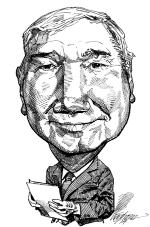Supreme Court of Canada clarifies what is/is not constructive dismissal.
Friday, March 06, 2015 - Filed in: Courts

In Potter v. New Brunswick Legal Aid Services Commission, the SCC held (7:0, with 2 judges writing separate concurring reasons) that the appeal is allowed.
From the decision:
Justice Wagner wrote as follows (at paras. 1, 97-99, 107-109):
"… whether and in what circumstances a non-unionized employee who is suspended with pay may claim to have been constructively dismissed. The case involves the indefinite suspension of an employee with pay in the context of negotiations for a buyout of his contract of employment … Mr. Potter’s employer, the New Brunswick Legal Aid Services Commission (“Commission”), lacked the authority, whether express or implied, to suspend him indefinitely with pay for the reasons it gave. I find that Mr. Potter was constructively dismissed and that he is accordingly entitled to damages for wrongful dismissal. I would adopt the trial judge’s provisional assessment of those damages, with the exception that the pension benefits Mr. Potter received should not be deducted from them.
…
I do not find it necessary to articulate a rigid framework for determining whether a particular administrative suspension is wrongful. The approach to be taken and the factors to be considered will depend on the nature and circumstances of the suspension. The overriding question will be whether the suspension was reasonable and justified. That said, it is clear from the above discussion that certain factors, while they may not be necessary, will always be relevant. These factors include the duration of the suspension, whether the suspension is with pay, and good faith on the employer’s part, including the demonstration of legitimate business reasons.
In my view, legitimate business reasons constitute a requirement for a finding that an administrative suspension based on an implied authority to suspend is not wrongful. Other than in the context of a disciplinary suspension, an employer does not, as a matter of law, have an implied authority to suspend an employee without such reasons. Legitimate business reasons must always be shown, although the nature or the importance of those reasons will vary with the circumstances of the suspension.
In the instant case, this basic requirement was not met. To begin with, Mr. Potter was given no reasons for the suspension. It seems to me that, in most circumstances, an administrative suspension cannot be found to be justified in the absence of a basic level of communication with the employee. At a minimum, acting in good faith in relation to contractual dealings means being honest, reasonable, candid, and forthright:Bhasin v. Hrynew, 2014 SCC 71, at para. 66. Failing to give an employee any reason whatsoever for his suspension is, in my opinion, not being forthright. Moreover, the limited evidence presented in support of the Board’s ostensible purpose of facilitating a buyout is undercut by the actions the Board took to have Mr. Potter terminated … Mr. Potter was replaced during the suspension period and that that period was indefinite, and there remains no doubt in my mind that the suspension was unauthorized. To reiterate, which factors must be considered will vary with the context and will depend on the nature and circumstances of the suspension.
…
Because I have concluded that Mr. Potter was constructively dismissed, the question whether the bringing of his action for constructive dismissal amounted to a resignation does not arise. The contract had already been repudiated by the Board. Although the courts below both ruled on this issue and submissions were made on it in this Court, it would in my view be inadvisable to reach any conclusions with respect to the resignation of an employee in the absence of circumstances requiring me to address the issue.
I would note, however, that in many failed constructive dismissal cases, the reason why the question of resignation by the employee does not arise will be that it is clear that the employee has resigned, given that, after the employer acted unilaterally to, for instance, demote the employee or transfer him or her to a new position, the employee elected to quit work and sue the employer. In this typical situation, if the constructive dismissal action fails, the employee cannot then argue that he or she did not quit work.
Nevertheless, there are instances in which it will not be necessary to conclude that the employee has resigned in bringing the constructive dismissal suit. One such case would be where, following the changes to the contract, the employee has continued to work under protest. This Court has held that employees have a duty to mitigate their damages by remaining in the workplace, provided that doing so would not be objectively unreasonable: see, e.g., Evans v. Teamsters Local Union No. 31, 2008 SCC 20, [2008] 1 S.C.R. 661. Where the employment relationship has not become untenable, it is not evident that by commencing legal action the employee should be held to have resigned by operation of law."
Note: This summary is drawn from Eugene Meehan’s SupremeAdvocacy Weekly Updates for the Law Community.


